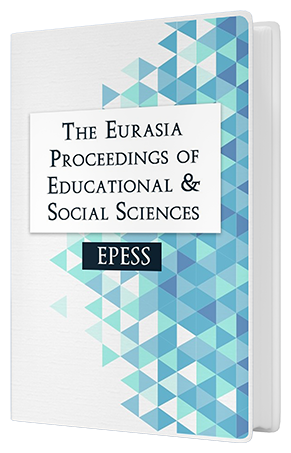A BIOMECHATRONIC APPLICATION ON PROSTHETICS FOR UNDERGRADUATE ENGINEERING STUDENTS
Keywords:
Assistive technologies, human hand prosthetics, science and engineering educationAbstract
Human hand prosthetics imply a great challenge to researchers to help regaining the lost motor functions for amputated people. A relatively high amount of labor and budget are required to reach the ordinary prosthetics for amputees. Improvement of assistive technologies has provided to design and manufacture more functional hand prosthetics. Novel tools employed in assistive technology including 3-dimensional printers and user-friendly electronics complementary devices have made a great contribution to prosthetics area with fast and cost effective solutions. Although a significant development of technical facilities has been occurred, prosthetic hands with high functionality could not gain wide currency since the manufacturing and design processes require more educated engineers and biomechanicsts. Introducing the design and manufacturing steps of prosthetics for educational purposes in engineering and life sciences could be very effective in order to ease accessing the more functional prosthetics and to increase the prevalence of use. Education of new methodology and devices provides crucial opportunities to enhance the ability and usage of new generation prosthetics. In this study, a prosthetic hand design, control and manufacturing implementations were carried out by undergraduate students in the context of dissertation study. The custom based human hand prosthetics was manufactured according to following steps. Three-dimensional CAD models of prosthetic hand components including palm and fingers were designed in a solid body modeling software. Then, the model parts were printed using 3-D printers and they were assembled. The forces were transmitted to the fingers via elastic strings which were controlled via Arduino controlled servo motor. The programmable motions of servo motors enable to direct control of fingers. Specific education on design, manufacturing and control of human prosthetics has the potential to provide a high impact on obtaining more functional and cost effective prosthetics which enables more people to regain their lost motor patterns.Downloads
Published
Issue
Section
License
Copyright (c) 2016 The Eurasia Proceedings of Educational and Social Sciences

This work is licensed under a Creative Commons Attribution-NonCommercial-ShareAlike 4.0 International License.
The articles may be used for research, teaching, and private study purposes. Any substantial or systematic reproduction, redistribution, reselling, loan, sub-licensing, systematic supply, or distribution in any form to anyone is expressly forbidden. Authors alone are responsible for the contents of their articles. The journal owns the copyright of the articles. The publisher shall not be liable for any loss, actions, claims, proceedings, demand, or costs or damages whatsoever or howsoever caused arising directly or indirectly in connection with or arising out of the use of the research material. All authors are requested to disclose any actual or potential conflict of interest including any financial, personal or other relationships with other people or organizations regarding the submitted work.




